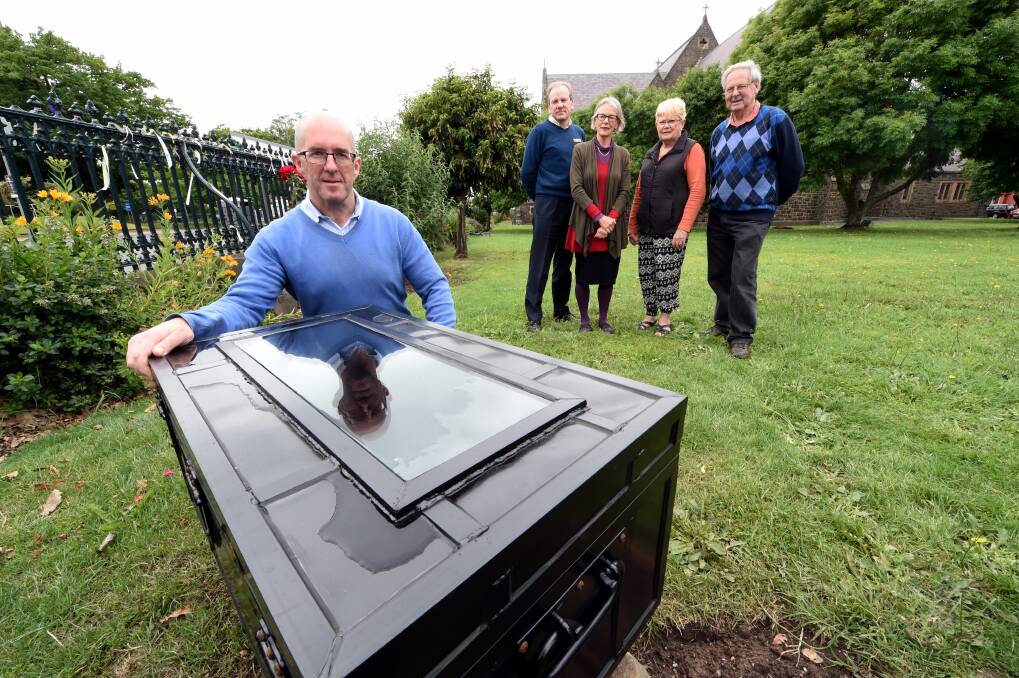The most prominent display of the Loud Fence movement is set to come down next week, more than two years after the first ribbons were tied at St Patrick’s Cathedral.
Subscribe now for unlimited access.
or signup to continue reading

The north-eastern corner of the cathedral site which backs onto Sturt and Lyons streets is set to be transformed into an open garden for survivors and the community to reflect.
On Sunday December 17 survivors, parishioners and members of the general community will be invited to come to the garden’s official unveiling where individuals will be able to remove their own ribbons and place them in a custom made box or take them home.
The box which has been handmade at St Patrick’s College features a clear top to ensure the ribbons are still visible. Ballarat Catholic Diocese Vicar-General Justin Driscoll said while he understood for some the removal may be too soon, the decision was reached through consultation with survivors.
“The Loud Fence movement...really took off here in Ballarat and because of our location this is a key fence and it’s a key symbol and it really highlighted the support people have for the survivors,” Fr Driscoll said.
“These ribbons don’t belong to us but we’re happy to create a space where they can be kept and this experience can be remembered because it’s a watershed moment in Ballarat’s history and our church’s history.”
The garden’s unveiling will come two days after the Royal Commission into Institutional Responses to Child Sexual Abuse hands down its findings to the Governor General.

In a further act of symbolism, a church gate on Lyons Street which has been locked shut for decades is set to be reopened and will serve as the main point of entry to the new garden.
The Loud Fence movement became a prominent feature of the commission, with church figures such as Fr Driscoll, Bishop Paul Bird and even Cardinal George Pell pictured tying ribbons in addition to the thousands of community members who have shown their support.
The move comes after St Patrick’s College created a similar memorial near the school’s Sturt Street entrance which was unveiled in June as part of an official apology to survivors of sexual abuse.
Abuse survivor Phil Nagle said he was pleased to see the ribbons would continue to occupy a significant place within the church grounds to ensure the events would not be forgotten.
He said he hoped all community members who have shown their support through tying a ribbon would return for the ceremony. “To have a visible memorial and to know the ribbons are actually being held in there is really appropriate,” Mr Nagle said.
“It’s going to be a very emotional day and it’ll be very significant for a lot of people but it is the appropriate time with the Royal Commission handing down its findings.”
The formal campaign behind the Loud Fence movement, which was established at the beginning of the Royal Commission, came to a close in May.
Loud Fence organiser Maureen Hatcher said while she was pleased to see how the community had embraced the concept, she hoped those still struggling with the trauma of sexual abuse would be able to continue to tie ribbons.














